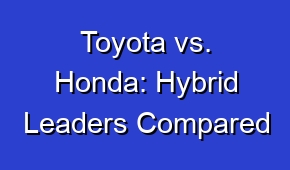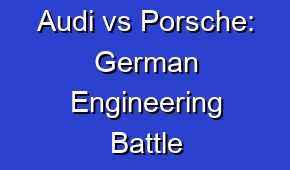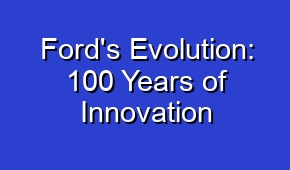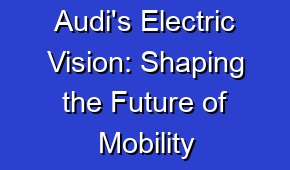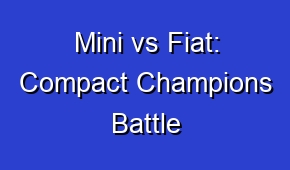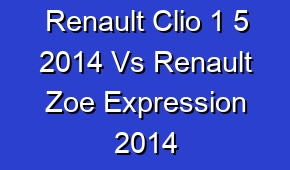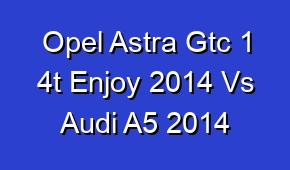Tesla vs NIO: Electric Showdown Unveiled
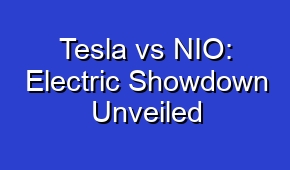
Get ready for an electrifying showdown as Tesla and NIO go head-to-head in the battle of electric dreams. Discover the latest updates, comparisons, and insights on these two pioneering automakers as they revolutionize the future of electric vehicles.
Electric dreams: Tesla vs NIO showdown has become a hot topic in the automotive industry. As two prominent players in the electric vehicle market, Tesla and NIO are constantly pushing the boundaries of innovation and captivating the imagination of consumers worldwide. With their cutting-edge technologies and eco-friendly solutions, both companies are striving to shape the future of transportation.
When it comes to electric vehicles, Tesla has been a game-changer. Their sleek designs, long-range capabilities, and advanced autopilot features have revolutionized the industry. Meanwhile, NIO has emerged as a formidable competitor, offering luxurious electric SUVs and a unique battery swapping system for quick recharging.
The Tesla vs NIO showdown is not just about which brand dominates the market; it represents a battle for sustainable mobility and a greener future. As consumers increasingly prioritize eco-conscious choices, these two companies are at the forefront of providing electric dreams that surpass expectations.
| Electric dreams: Tesla vs NIO showdown |
| Both Tesla and NIO are leading the electric vehicle market. |
| The Tesla Model S offers impressive range and acceleration. |
| NIO’s electric vehicles are known for their innovative design and advanced technology. |
| The rivalry between Tesla and NIO is driving innovation in the EV industry. |
- The Tesla Model 3 and NIO ES6 are popular choices in the mid-range electric vehicle segment.
- Both Tesla and NIO have a strong presence in the Chinese market.
- Tesla’s Supercharger network provides convenient and fast charging options for its vehicles.
- NIO’s battery swapping technology allows for quick battery replacement on long trips.
- Investors are closely watching the competition between Tesla and NIO in the electric vehicle market.
What are the key differences between Tesla and NIO electric cars?
Tesla and NIO are two prominent players in the electric car industry, each with its own unique features and offerings. One key difference between the two is their origin. Tesla is an American company, while NIO is a Chinese company. This distinction can influence factors such as design, technology, and target markets.
| Feature | Tesla | NIO |
| Range | Tesla cars generally have a longer range. | NIO cars have a slightly shorter range compared to Tesla. |
| Charging Network | Tesla has an extensive Supercharger network. | NIO has a growing Power Swap and Power Home network. |
| Autonomous Driving | Tesla offers advanced Autopilot features. | NIO has similar autonomous driving capabilities. |
In terms of performance, Tesla cars are known for their impressive acceleration and range. They have established a reputation for delivering high-performance electric vehicles with long battery life. On the other hand, NIO focuses on providing a more luxurious and comfortable driving experience, with features such as advanced suspension systems and spacious interiors.
Which electric car brand offers better autonomous driving capabilities: Tesla or NIO?
Tesla and NIO are both at the forefront of autonomous driving technology in the electric car industry. However, there are some differences in their approaches and capabilities.
- Tesla has been at the forefront of autonomous driving technology with their Autopilot feature, which allows the car to steer, accelerate, and brake automatically. They have been continuously improving their autonomous capabilities through software updates and have a large fleet of vehicles collecting data to enhance their self-driving algorithms.
- NIO, a Chinese electric car brand, also offers autonomous driving capabilities through their NIO Pilot feature. While not as advanced as Tesla’s Autopilot, NIO Pilot still provides a level of autonomous driving with features such as lane keeping assist, adaptive cruise control, and automatic parking.
- One advantage that NIO has over Tesla in terms of autonomous driving capabilities is their integration with the Baidu Apollo platform. This partnership allows NIO to benefit from Baidu’s extensive expertise in artificial intelligence and autonomous driving technology, which could potentially give them an edge in the development of advanced self-driving features.
Tesla’s Autopilot system is well-known for its advanced features and continuous updates. It offers features such as lane centering, adaptive cruise control, and automatic lane changes. Tesla has also been working towards achieving full self-driving capabilities with its Full Self-Driving (FSD) package.
What is the price range of Tesla and NIO electric cars?
Tesla and NIO offer a range of electric car models at different price points to cater to various customer needs and budgets.
- The price range of Tesla Model 3 starts at $35,000 and goes up to $56,000.
- The price range of Tesla Model S starts at $79,990 and goes up to $139,990.
- The price range of Tesla Model X starts at $84,990 and goes up to $124,990.
- The price range of NIO ES6 starts at $52,000 and goes up to $67,000.
- The price range of NIO ES8 starts at $67,000 and goes up to $85,000.
Tesla’s lineup includes models such as the Model 3, Model S, and Model X. The starting price for the Model 3, which is Tesla’s most affordable option, is around $39,000. The prices for the Model S and Model X start at approximately $79,000 and $89,000, respectively. However, it’s important to note that these prices can vary depending on additional features and customization options.
What is the charging infrastructure like for Tesla and NIO electric cars?
Tesla and NIO have developed their own charging infrastructures to support the charging needs of their electric cars.
| Charging Speed | Charging Network | Charging Stations |
| Tesla: Superchargers provide fast charging, delivering up to 170 miles of range in 30 minutes. | Tesla: Tesla Supercharger network is a proprietary network of charging stations. | Tesla: Over 25,000 Superchargers globally. |
| NIO: Standard charging speed delivers approximately 62 miles of range in 10 minutes. | NIO: NIO Power Swap and NIO Power Home are the main charging options for NIO vehicles. | NIO: Over 300 Power Swap Stations and over 200 Power Home stations in China. |
| NIO: Fast charging speed delivers approximately 100 miles of range in 15 minutes. | NIO: NIO Power Mobile is a portable charger that can be used for emergency charging. | NIO: NIO Power Mobile chargers are available in select locations. |
Tesla has established a vast network of Supercharger stations, which are strategically located across different regions. These stations offer high-speed charging and can significantly reduce charging times compared to traditional charging methods. Tesla owners can conveniently access the Supercharger network to charge their vehicles during long trips or when they are in need of a quick charge.
Which electric car brand offers better range: Tesla or NIO?
Tesla and NIO are known for offering electric cars with impressive range capabilities, allowing drivers to travel longer distances on a single charge.
Tesla generally offers better range compared to NIO in terms of electric cars.
Tesla’s Model S Long Range, for example, has an estimated range of over 400 miles, making it one of the electric cars with the longest range currently available. The Model 3 and Model X also offer competitive ranges, with the Model 3 Standard Range Plus having an estimated range of around 263 miles.
What are the main safety features of Tesla and NIO electric cars?
Tesla and NIO prioritize safety and incorporate various advanced features to ensure the well-being of their drivers and passengers.
Tesla and NIO electric cars come with advanced safety features including autopilot, collision avoidance, emergency braking, and lane departure warning systems.
Tesla vehicles come equipped with a comprehensive set of safety features, including collision avoidance systems, automatic emergency braking, and blind-spot monitoring. Tesla’s Autopilot system also enhances safety by assisting with tasks such as lane centering and adaptive cruise control. Additionally, Tesla cars have received high safety ratings from organizations such as the National Highway Traffic Safety Administration (NHTSA) and the European New Car Assessment Programme (Euro NCAP).
What is the performance comparison between Tesla and NIO electric cars?
Tesla and NIO are known for producing electric cars that offer impressive performance capabilities.
Tesla Performance
– Tesla electric cars are known for their impressive acceleration and top speed.
– Models such as the Tesla Model S Plaid and Tesla Model 3 Performance have achieved record-breaking acceleration times.
– The Tesla Model S Plaid, for example, can go from 0 to 60 mph in under 2 seconds, making it one of the quickest production cars in the world.
NIO Performance
– NIO electric cars also offer excellent performance capabilities.
– The NIO EP9, a high-performance electric supercar, has set several records including the fastest lap time for an electric vehicle on the Nürburgring Nordschleife racetrack.
– NIO’s production models, such as the NIO ES8 and NIO ES6, offer impressive acceleration and handling, making them competitive with other electric car manufacturers.
Performance Comparison
– Both Tesla and NIO offer electric cars with exceptional performance.
– Tesla is known for its groundbreaking acceleration and top speed capabilities, while NIO has also demonstrated impressive performance with its EP9 supercar and production models.
– The specific performance comparison between Tesla and NIO models may vary depending on the specific models being compared.
Tesla’s Model S Plaid, for example, boasts incredible acceleration and can go from 0 to 60 mph in under 2 seconds. The Model 3 Performance also offers impressive acceleration, reaching 0 to 60 mph in around 3.1 seconds. In addition to acceleration, Tesla cars are known for their high top speeds and agile handling.
